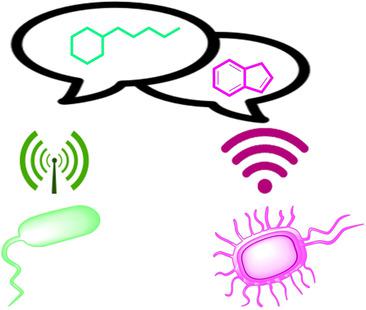当前位置:
X-MOL 学术
›
Chem. Asian J.
›
论文详情
Our official English website, www.x-mol.net, welcomes your
feedback! (Note: you will need to create a separate account there.)
Cryptic Chemical Communication: Secondary Metabolic Responses Revealed by Microbial Co-culture.
Chemistry - An Asian Journal ( IF 3.5 ) Pub Date : 2020-01-20 , DOI: 10.1002/asia.201901505 Chao Liu 1 , Hideaki Kakeya 1
Chemistry - An Asian Journal ( IF 3.5 ) Pub Date : 2020-01-20 , DOI: 10.1002/asia.201901505 Chao Liu 1 , Hideaki Kakeya 1
Affiliation

|
Microbial secondary metabolites (SMs) have long been viewed as a significant source of novel pharmaceutical and agrochemical molecules. With the increasing availability of genomic data, numerous biosynthetic gene clusters (BGCs) have been discovered. Despite the presence of tens of thousands of BGCs that can theoretically produce extremely diverse SMs, many gene clusters remain in a silent state under axenic culture conditions. Co-culture is a promising research approach as it stimulates the expression of cryptic BGCs to produce novel metabolites and also mimics natural interspecies interactions in a laboratory environment. In recent years, the roles of SMs in microbial communication have caught the attention of researchers and our understanding of microbes and their production of remarkable SMs has improved. SMs may be extensively involved in a variety of communication events among microorganisms. We herein summarize certain representative findings in the field of chemical communication involving SMs in co-culture systems.
中文翻译:

隐性化学交流:微生物共培养显示的次级代谢反应。
长期以来,微生物次生代谢物(SMs)被视为新型药物和农用化学分子的重要来源。随着基因组数据可用性的增加,已经发现了许多生物合成基因簇(BGC)。尽管存在成千上万的BGC,它们在理论上可以产生极其多样的SM,但在轴突培养条件下,许多基因簇仍保持沉默状态。共培养是一种有前途的研究方法,因为它可以刺激隐蔽的BGC的表达以产生新的代谢产物,并且还可以模拟实验室环境中自然的种间相互作用。近年来,SM在微生物传播中的作用引起了研究人员的关注,并且我们对微生物的理解以及它们对非凡SM的产生的了解也有所提高。SM可能广泛参与微生物之间的各种交流事件。我们在此总结了涉及共培养系统中SM的化学交流领域的某些代表性发现。
更新日期:2020-01-21
中文翻译:

隐性化学交流:微生物共培养显示的次级代谢反应。
长期以来,微生物次生代谢物(SMs)被视为新型药物和农用化学分子的重要来源。随着基因组数据可用性的增加,已经发现了许多生物合成基因簇(BGC)。尽管存在成千上万的BGC,它们在理论上可以产生极其多样的SM,但在轴突培养条件下,许多基因簇仍保持沉默状态。共培养是一种有前途的研究方法,因为它可以刺激隐蔽的BGC的表达以产生新的代谢产物,并且还可以模拟实验室环境中自然的种间相互作用。近年来,SM在微生物传播中的作用引起了研究人员的关注,并且我们对微生物的理解以及它们对非凡SM的产生的了解也有所提高。SM可能广泛参与微生物之间的各种交流事件。我们在此总结了涉及共培养系统中SM的化学交流领域的某些代表性发现。











































 京公网安备 11010802027423号
京公网安备 11010802027423号